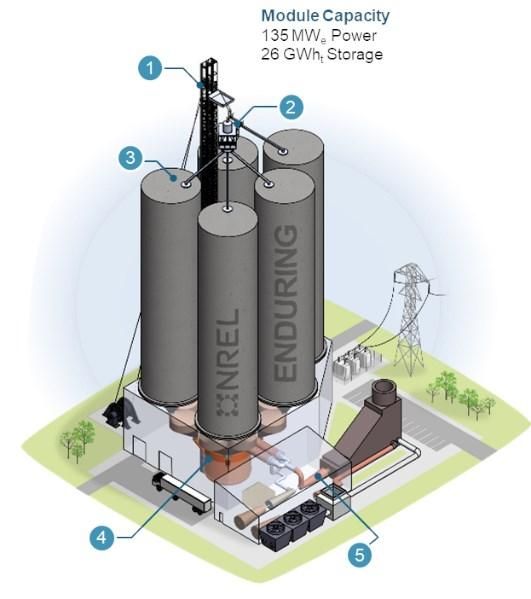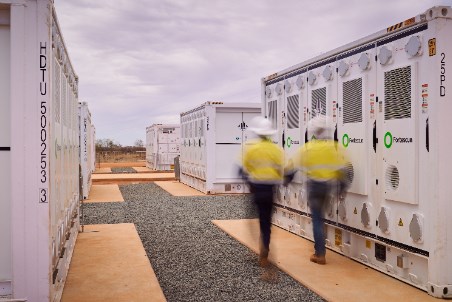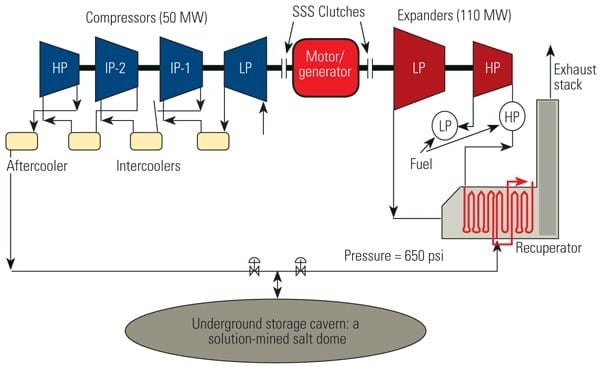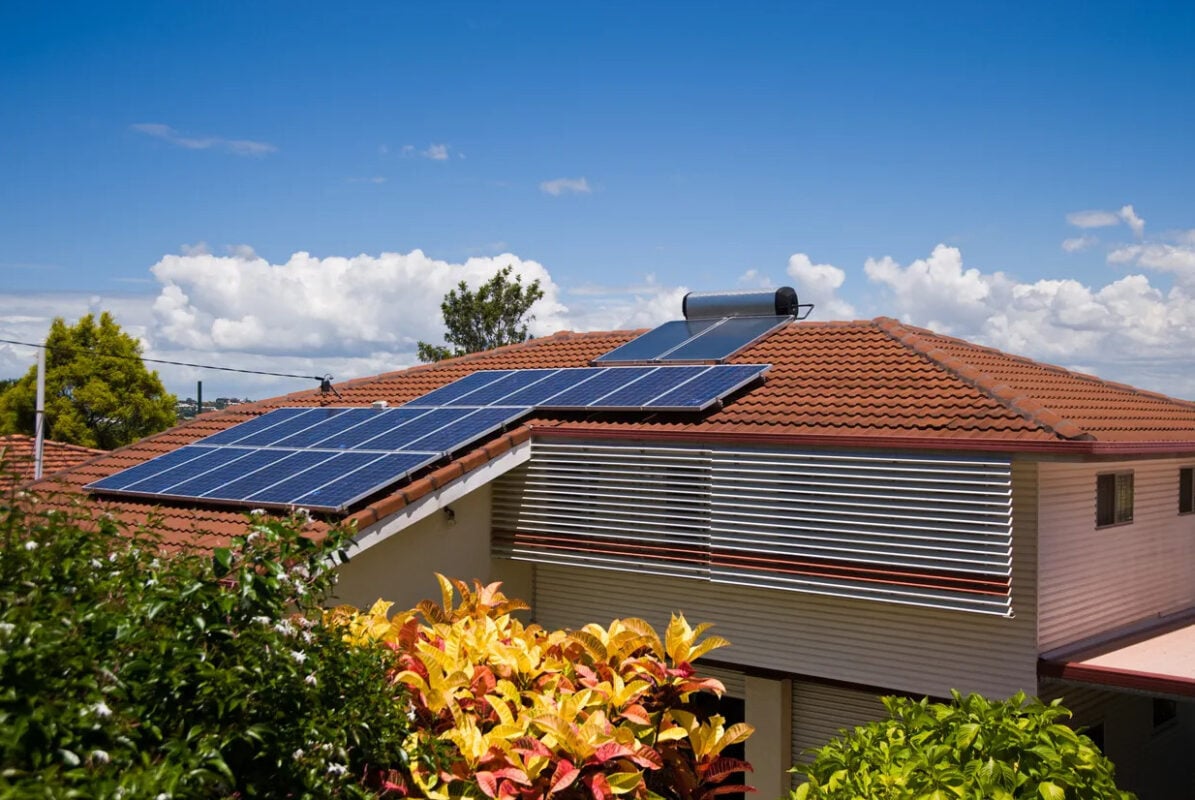Nordex and SSE to develop 42 MW of new wind capacity in Spain’s Aragón region – Energies Media

Report on Wind Energy Development in Spain and its Contribution to Sustainable Development Goals
Executive Summary
This report details a new 42 MW wind energy project in the Aragón region of Spain, a collaboration between the Nordex Group and SSE. The project significantly contributes to several United Nations Sustainable Development Goals (SDGs), particularly in the areas of clean energy, economic growth, climate action, and sustainable partnerships. By utilizing advanced technology and local manufacturing, the initiative serves as a model for sustainable infrastructure development.
Project Overview and Contribution to SDG 7: Affordable and Clean Energy
The development of two new wind farms in Spain directly supports the objectives of SDG 7 by increasing the share of renewable energy in the national energy mix. This initiative is a critical step in the global transition away from conventional, emission-heavy energy sources.
Project Specifications
- Total Capacity: 42 MW
- Developers: Nordex Group and SSE
- Location: Aragón region, Spain
- Wind Farms:
- Minguez wind farm (19 MW)
- Portalrubio wind farm (23 MW)
- Technology: The project will utilize seven N163 wind turbines, supplied and installed by the Nordex Group.
Economic and Industrial Development (SDG 8 & SDG 9)
The project fosters decent work, economic growth, and promotes sustainable industrialization, aligning with SDG 8 and SDG 9. The commitment to local manufacturing strengthens Spain’s domestic supply chain and creates economic opportunities.
Local Manufacturing and Job Creation
- Contribution to SDG 8 (Decent Work and Economic Growth): The project boosts domestic production and creates local employment opportunities through its manufacturing and service operations.
- Local Sourcing: Key components for the wind farms, including towers, blades, and nacelles, will be manufactured within Spain.
- Proximity Advantage: The manufacturing facility is located approximately three hours from the project sites, enhancing logistical efficiency and supporting the regional economy.
- Service Infrastructure: A Nordex Group service point in Zaragoza ensures local operational support and further embeds the company within the regional economic fabric.
Climate Action and Sustainable Infrastructure (SDG 13 & SDG 11)
By generating clean electricity, the 42 MW project is a direct measure to combat climate change and its impacts, a core target of SDG 13. It also contributes to building resilient and sustainable communities as outlined in SDG 11.
Emission Reduction and Long-Term Reliability
- Contribution to SDG 13 (Climate Action): The wind farms will help avoid significant carbon emissions, contributing to Spain’s decarbonization targets and global climate goals.
- Contribution to SDG 9 (Industry, Innovation, and Infrastructure): The use of advanced N163 turbine technology represents an investment in innovative and sustainable infrastructure.
- Operational Assurance: A 20-year Premium Service contract has been included to ensure long-term operational reliability and maximize energy yields, reinforcing the project’s sustainability.
Global Partnership and Context (SDG 17)
The collaboration between Nordex Group and SSE Renewables exemplifies SDG 17 (Partnerships for the Goals), showcasing a successful international partnership to advance sustainable development.
Strengthening Collaborative Efforts
- Long-Standing Partnership: This new order extends a pre-existing and successful relationship between the two companies, previously demonstrated by the 64 MW Jubera wind farm project.
- European Leadership: Spain’s continued development of wind power, in contrast to reported permitting delays in other regions like the United States, positions Europe as a leader in the renewable energy transition.
- Regional Impact: As stated by Francisco Cejudo, Director Sales Spain at Nordex Group, the project reinforces Aragón’s leadership in renewable energy and supports the region’s ambitious wind energy targets.
Analysis of Sustainable Development Goals (SDGs) in the Article
1. Which SDGs are addressed or connected to the issues highlighted in the article?
-
SDG 7: Affordable and Clean Energy
The entire article focuses on the development of a new 42 MW wind capacity project in Spain. This directly relates to increasing the share of clean and renewable energy sources in the energy mix, moving away from conventional, polluting energy processes.
-
SDG 8: Decent Work and Economic Growth
The article mentions that components for the wind farms, such as “the towers, blades, and nacelles for the wind farms will be manufactured in Spain.” This boosts domestic production and implies the creation of local jobs in manufacturing and services, contributing to local economic growth.
-
SDG 9: Industry, Innovation, and Infrastructure
The project involves building new, sustainable energy infrastructure (wind farms) and utilizing “advanced turbine technology” (specifically, seven N163 wind turbines). This promotes sustainable industrialization and technological upgrading within the energy sector.
-
SDG 13: Climate Action
A primary motivation for such projects, as stated in the article, is to “help avoid massive amounts of emissions” and for nations to “decarbonize their energy markets.” This directly addresses the goal of combating climate change and its impacts.
-
SDG 17: Partnerships for the Goals
The project is a result of a partnership between the Nordex Group and SSE, described as a “long-standing relationship.” This collaboration between two international companies to achieve a sustainable development objective exemplifies a partnership for the goals.
2. What specific targets under those SDGs can be identified based on the article’s content?
-
Target 7.2: Increase the share of renewable energy
By 2030, increase substantially the share of renewable energy in the global energy mix. The article’s focus on a new 42 MW wind power project in Spain is a direct contribution to this target.
-
Target 9.4: Upgrade infrastructure and retrofit industries for sustainability
By 2030, upgrade infrastructure and retrofit industries to make them sustainable, with increased resource-use efficiency and greater adoption of clean and environmentally sound technologies. The installation of “seven N163 wind turbines” represents the adoption of clean technology and the development of sustainable energy infrastructure.
-
Target 13.2: Integrate climate change measures into policies and planning
Integrate climate change measures into national policies, strategies and planning. The article notes that Spain is “moving forward with its wind power dream and developing new projects,” which reflects the country’s national strategy to meet “clean energy targets” and decarbonize its energy market.
-
Target 17.17: Encourage effective partnerships
Encourage and promote effective public, public-private and civil society partnerships. The project is a collaboration between two private companies, Nordex Group and SSE, to build renewable energy capacity, which is a clear example of a private-private partnership contributing to sustainable goals.
3. Are there any indicators mentioned or implied in the article that can be used to measure progress towards the identified targets?
-
Indicator for Target 7.2: Installed renewable energy capacity
The article provides a specific metric for progress: the development of a “42 MW wind capacity project.” This directly measures the increase in renewable electricity-generating capacity.
-
Indicator for Target 9.4: Reduction in emissions
The article explicitly states that renewable energy projects “help avoid massive amounts of emissions.” While not quantified, this implies that a key performance indicator for this project is the amount of CO2 emissions reduced compared to conventional energy sources.
-
Indicator for Target 8.2: Local economic impact
The article implies economic indicators by mentioning that “the towers, blades, and nacelles for the wind farms will be manufactured in Spain” and that Nordex has a “service point in Zaragoza.” This suggests that progress could be measured by the number of local jobs created in manufacturing and services, and the value of domestic production.
4. Create a table with three columns titled ‘SDGs, Targets and Indicators” to present the findings from analyzing the article.
| SDGs | Targets | Indicators |
|---|---|---|
| SDG 7: Affordable and Clean Energy | 7.2: Increase substantially the share of renewable energy in the global energy mix. | Installed renewable energy capacity (specifically, the “42 MW wind capacity project”). |
| SDG 8: Decent Work and Economic Growth | 8.2: Achieve higher levels of economic productivity through diversification and technological upgrading. | (Implied) Number of local jobs created through domestic manufacturing (“towers, blades, and nacelles…manufactured in Spain”) and local service points. |
| SDG 9: Industry, Innovation, and Infrastructure | 9.4: Upgrade infrastructure and industries for sustainability with clean technologies. | Adoption of advanced clean technology (the “seven N163 wind turbines”). |
| SDG 13: Climate Action | 13.2: Integrate climate change measures into national policies and planning. | Reduction in greenhouse gas emissions (the project will “help avoid massive amounts of emissions”). |
| SDG 17: Partnerships for the Goals | 17.17: Encourage and promote effective public-private and civil society partnerships. | Number of private-private partnerships for sustainable development (the collaboration between “Nordex Group” and “SSE”). |
Source: energiesmedia.com
What is Your Reaction?
 Like
0
Like
0
 Dislike
0
Dislike
0
 Love
0
Love
0
 Funny
0
Funny
0
 Angry
0
Angry
0
 Sad
0
Sad
0
 Wow
0
Wow
0



















































.jpg.webp?itok=0ZsAnae9#)


























